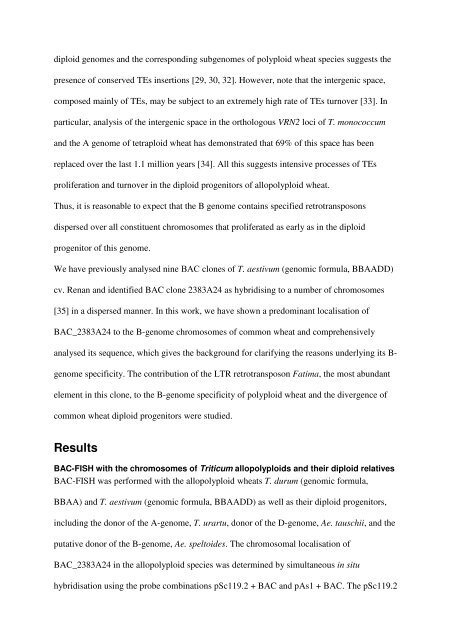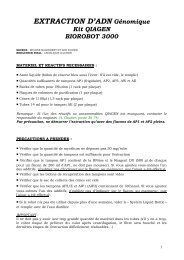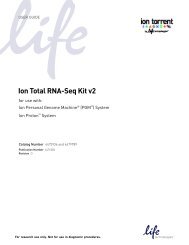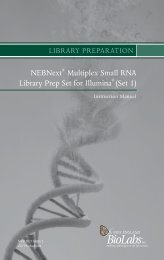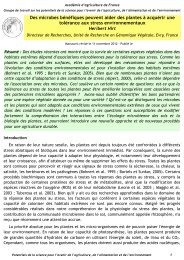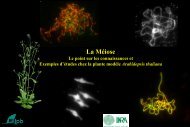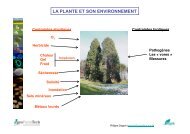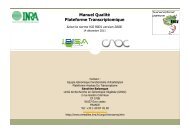The impact of Ty3-gypsy group LTR retrotransposons ... - URGV - Inra
The impact of Ty3-gypsy group LTR retrotransposons ... - URGV - Inra
The impact of Ty3-gypsy group LTR retrotransposons ... - URGV - Inra
You also want an ePaper? Increase the reach of your titles
YUMPU automatically turns print PDFs into web optimized ePapers that Google loves.
diploid genomes and the corresponding subgenomes <strong>of</strong> polyploid wheat species suggests the<br />
presence <strong>of</strong> conserved TEs insertions [29, 30, 32]. However, note that the intergenic space,<br />
composed mainly <strong>of</strong> TEs, may be subject to an extremely high rate <strong>of</strong> TEs turnover [33]. In<br />
particular, analysis <strong>of</strong> the intergenic space in the orthologous VRN2 loci <strong>of</strong> T. monococcum<br />
and the A genome <strong>of</strong> tetraploid wheat has demonstrated that 69% <strong>of</strong> this space has been<br />
replaced over the last 1.1 million years [34]. All this suggests intensive processes <strong>of</strong> TEs<br />
proliferation and turnover in the diploid progenitors <strong>of</strong> allopolyploid wheat.<br />
Thus, it is reasonable to expect that the B genome contains specified <strong>retrotransposons</strong><br />
dispersed over all constituent chromosomes that proliferated as early as in the diploid<br />
progenitor <strong>of</strong> this genome.<br />
We have previously analysed nine ВАС clones <strong>of</strong> T. aestivum (genomic formula, BBAADD)<br />
cv. Renan and identified BAC clone 2383A24 as hybridising to a number <strong>of</strong> chromosomes<br />
[35] in a dispersed manner. In this work, we have shown a predominant localisation <strong>of</strong><br />
BAC_2383A24 to the B-genome chromosomes <strong>of</strong> common wheat and comprehensively<br />
analysed its sequence, which gives the background for clarifying the reasons underlying its B-<br />
genome specificity. <strong>The</strong> contribution <strong>of</strong> the <strong>LTR</strong> retrotransposon Fatima, the most abundant<br />
element in this clone, to the B-genome specificity <strong>of</strong> polyploid wheat and the divergence <strong>of</strong><br />
common wheat diploid progenitors were studied.<br />
Results<br />
BAC-FISH with the chromosomes <strong>of</strong> Triticum allopolyploids and their diploid relatives<br />
BAC-FISH was performed with the allopolyploid wheats T. durum (genomic formula,<br />
BBAA) and T. aestivum (genomic formula, BBAADD) as well as their diploid progenitors,<br />
including the donor <strong>of</strong> the A-genome, T. urartu, donor <strong>of</strong> the D-genome, Ae. tauschii, and the<br />
putative donor <strong>of</strong> the B-genome, Ae. speltoides. <strong>The</strong> chromosomal localisation <strong>of</strong><br />
BAC_2383A24 in the allopolyploid species was determined by simultaneous in situ<br />
hybridisation using the probe combinations pSc119.2 + BAC and pAs1 + BAC. <strong>The</strong> pSc119.2


